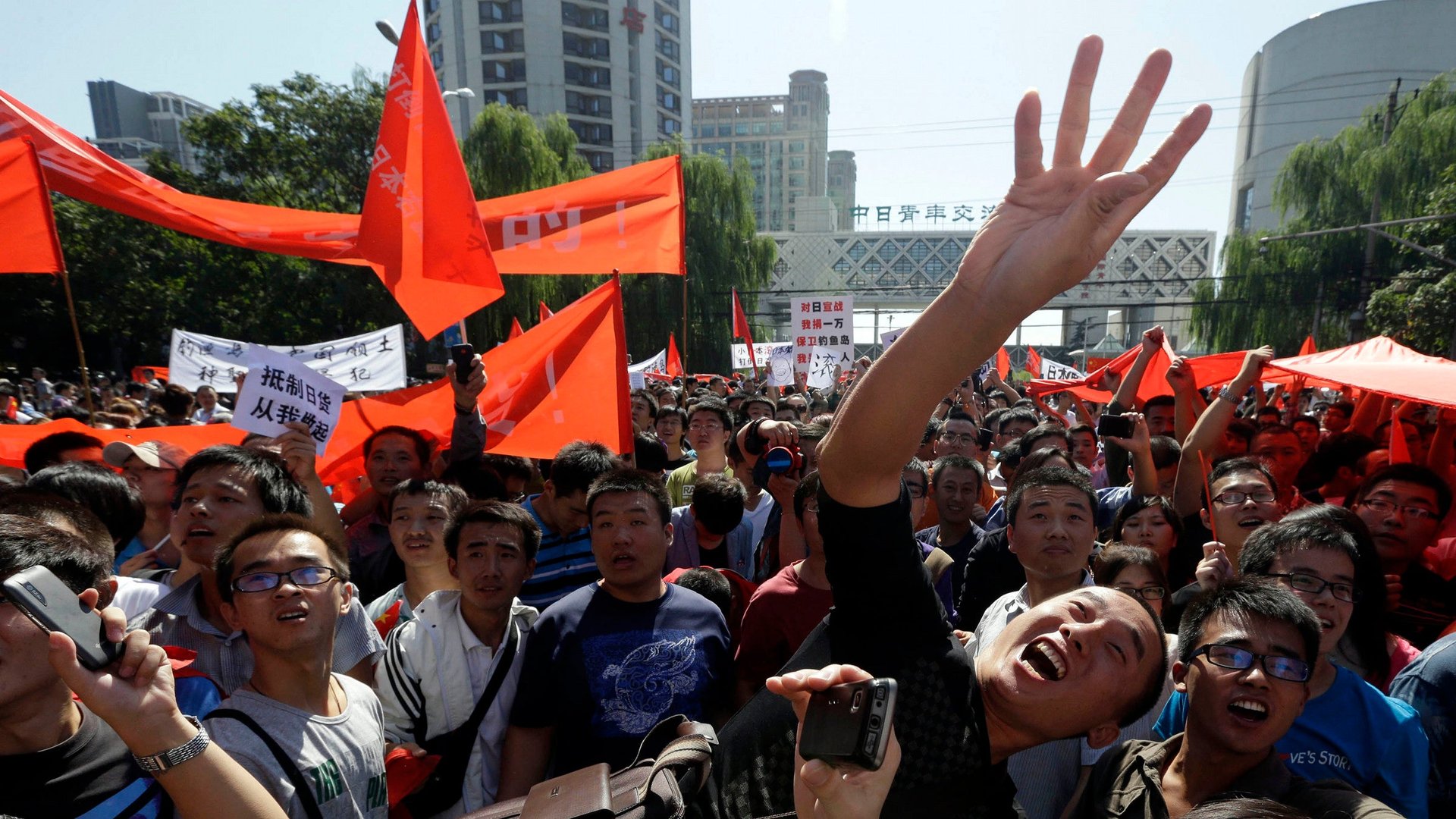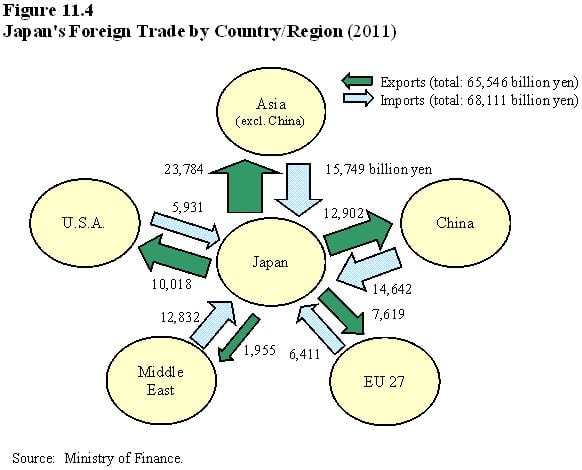What’s at stake in China-Japan island brinksmanship? US$345 billion in trade.
Update: Toyota has decided to cut production of vehicles for the Chinese market. It is among the Japanese companies closing factories in China amid protests over the islands East China Sea.


Update: Toyota has decided to cut production of vehicles for the Chinese market. It is among the Japanese companies closing factories in China amid protests over the islands East China Sea.
China is canceling ceremonies to celebrate 40 years of diplomatic relations with Japan. This is the latest escalation in a simmering 100-year old dispute between the two nations over the possession of some uninhabited islands in the East China sea that is fast becoming a real conflict. While Pekinologists and Tokyo watchers are debating how much of the saber-rattling is aimed at domestic audiences during political transitions, there’s plenty at stake, including a trade relationship worth US$344.9 billion in 2011.

In 2011, China was Japan’s largest trading partner, and the year produced record highs in imports, exports and total trade volume, according to this Japanese External Trade Organization report. The organization forecast that total 2012 trade could break that record by hitting US$350 billion.
But disputes over the sale of the Islands, known as the Senkaku to the Japanese and Diaoyu to the Chinese, have disrupted trade. Anti-Japanese protests in China led manufacturers like Nissan, Toyota and Honda to shut down manufacturing facilities and showrooms after mobs smashed windows and attacked vehicles on display. While those facilities are starting to re-open, analysts say there will be definite impact on auto sales. Even airline flights between the two countries have been reduced due to the tensions.
This doesn’t bode well for either country’s prosperity, or for the the globe’s. While prosaic concerns include supply chain disruptions between two major economies, some pundits say this is a manufactured conflict designed to test the US’s alliance with Japan—another opportunity for China to plant a flag announcing its status as an emerging world power. US Defense Secretary Leon Panetta visited Japan on Saturday as part of a broader tour of the region, urging China and Japan to settle the dispute peacefully through the Association of Southeast Asian Nations (ASEAN).